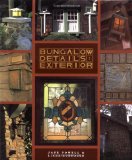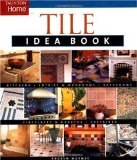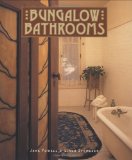Powell, Jane, and Linda Svendsen. Bungalow Details: Exterior. Salt Lake City [Utah: Gibbs Smith, 2004. Print.

I was trying to figure out good paint colours for the trim on our brick house (currently a weird mix of dark brown, green, and pink), and was thrilled to see another book by Jane Powell, whose book on Bungalow bathrooms I recently reviewed most glowingly.
I looked in vain for paint suggestions, beyond her mentioning several times that bright white trim is NOT appropriate – she seemed to think that I knew what was appropriate already. I thought I saw reference somewhere in the book to another book that dealt purely with paint colours, but I can’t find it now, either in the resources or in a quick skim of the book. I will keep on the lookout!
What I loved was her rant on vinyl windows, and she references this article here from a Historic Preservation Officer for the City of Newport. Her rant goes on for several pages, though!
Bibliography:
- Aladdin Company, The. Aladdin Homes: “Built in a Day” Catalog #29. Bay City, Michigan, 1917. Reprint by Mineola, New York: Dover Publications, 1995.
- American Technical Society. Cyclopedia of Architecture, Carpentry, and Building, Volume I. Chicago, Illinois, 1916.
- Building Brick Association of America, The. One Hundred Bungalows. Boston, Massachusetts: 1912. Reprint by Mineola, New York: Dover Publications, 1994.
-
Duchscherer, Paul, and Douglas Keister. Outside the Bungalow: America’s Arts & Crafts Garden. New York, N.Y., USA: Penguin Studio, 1999. Print.
-
Duchscherer, Paul, and Douglas Keister. The Bungalow: America’s Arts and Crafts Home. New York: Penguin Studio, 1995. Print.
-
Grimmer, Anne E., and Paul K. Williams. The Preservation and Repair of Historic Clay Tile Roofs. [Washington, D.C.]: U.S. Dept. of the Interior, National Park Service, Preservation Assistance Division, 1992. Print.
-
Grimmer, Anne E. The Preservation and Repair of Historic Stucco. [Washington, D.C.]: U.S. Dept. of the Interior, National Park Service, Preservation Assistance Division, 1990. Print.
-
Hull, Brent. Historic Millwork: a Guide to Restoring and Recreating Doors, Windows, and Moldings of the Late Nineteenth through Mid-twentieth Centuries. New York: John Wiley & Sons, 2003. Print.
-
Jester, Thomas C. Twentieth Century Building Materials: History and Conservation. [New York, NY]: McGraw Hill, 1995. Print.
-
King, Anthony D. The Bungalow: the Production of a Global Culture. London: Routledge & Kegan Paul, 1984. Print.
-
Lancaster, Clay. The American Bungalow: 1880-1930. New York: Abbeville Pr., 1985. Print.
-
Levine, Jeffrey S. The Repair, Replacement, and Maintenance of Historic Slate Roofs. [Washington, D.C.?]: U.S. Dept. of the Interior, National Park Service, Cultural Resources, Preservation Assistance, 1993. Print.
-
Meany, Terry. Working Windows: a Guide to the Repair and Restoration of Wood Windows. Guilford, CT: Lyons, 2008. Print.
-
One Hundred Bungalows. —. Boston: Rogers & Manson, 1912. Print.
- (Incomplete)



